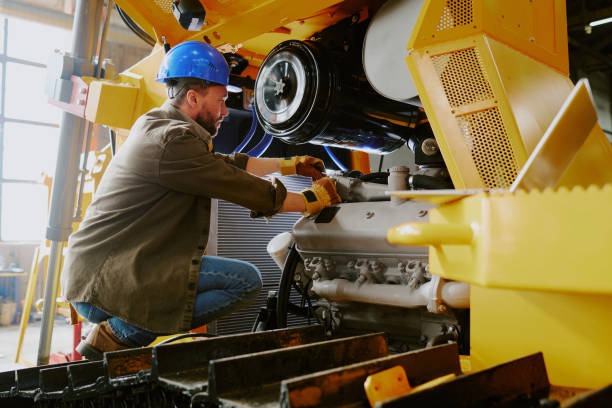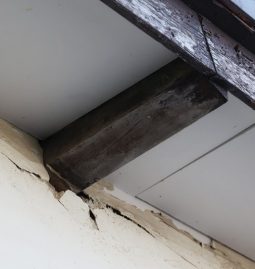Maintaining heavy equipment is paramount for businesses that rely on it to perform daily tasks. Equipment downtime can lead to significant losses in construction, mining, agriculture, or any other industry. Two primary maintenance strategies often come into play: proactive and reactive maintenance.
What is Proactive Maintenance?
Proactive maintenance is about foresight. It involves regular checks, cleaning, adjustments, lubrication, repairs, and replacements that prevent equipment failures before they happen. This approach can significantly extend the lifespan of heavy equipment.
Benefits of Proactive Maintenance
-
Cost-Effective: Regular inspections and maintenance can prevent costly repairs down the line.
-
Increased Equipment Lifespan: Equipment lasts longer when it’s consistently cared for.
-
Improved Safety: Regular maintenance can catch potentially dangerous issues before they escalate.
-
Minimal Downtime: Scheduled maintenance means less unexpected downtime.
What is Reactive Maintenance?
Reactive maintenance, as the name suggests, is the practice of fixing something after it has broken. This approach might seem cost-effective initially since you only spend money when necessary, but it comes with its own set of challenges.
Drawbacks of Reactive Maintenance
-
Higher Costs Over Time: Unexpected failures often lead to more extensive damage and, consequently, more expensive repairs.
-
Extended Downtime: Equipment remains out of service during repair, affecting business operations.
-
Safety Risks: Fixing equipment after a failure can pose risks, especially if the failure is critical.
Choosing the Right Maintenance Strategy
Choosing between proactive and reactive maintenance depends on various factors, such as budget, type of equipment, and industry requirements. However, a blend of both strategies often results in optimal equipment management.
The Balance: Predictive Maintenance
While proactive and reactive maintenance strategies have their merits, predictive maintenance combines the best of both worlds. Using data analytics, sensors, and IoT technology, businesses can predict equipment failures before they occur.
Advantages of Predictive Maintenance
-
Data-Driven Insights: Provides accurate information on equipment health.
-
Optimized Maintenance Intervals: Maintenance is performed only when necessary, based on real-time data.
-
Cost Savings: Reduces unnecessary maintenance activities and prevents unexpected failures.
Implementing a Proactive Maintenance Plan
For businesses eager to embrace proactive maintenance, the following steps can facilitate implementation:
1. Create a Comprehensive Maintenance Schedule
Develop a detailed schedule encompassing all equipment, taking into account:
-
Manufacturer Recommendations: Follow the manual for maintenance intervals and procedures.
-
Usage Patterns: Adjust the schedule based on how often and in what conditions the equipment is used.
2. Regular Training for Operators
Operators need to understand the importance of maintenance. Regular training sessions can ensure the following:
-
Proper Equipment Handling: Reducing wear and tear through correct usage.
-
Identification of Warning Signs: Operators can identify issues early on, preventing significant failures.
3. Invest in Quality Maintenance Resources
Ensure your maintenance team has access to the best tools and resources, which may include:
-
Professional Training: Keep technicians updated on the latest maintenance techniques.
-
High-Quality Spare Parts: Use reliable parts to ensure longevity and performance.
The Role of Modern Technology
Modern technology is transforming how maintenance is conducted, offering new solutions and efficiency improvements.
1. Leveraging IoT and Data Analytics
Using IoT devices and data analytics can provide insights into your equipment’s condition, facilitating timely interventions.
Benefits of Technology in Maintenance
-
Real-Time Monitoring: Equipment performance is monitored 24/7, providing real-time alerts for potential issues.
-
Historical Data Analysis: Helps identify patterns and predict future issues.
2. Using Platforms Like Heave App
Streamlining maintenance processes is efficient when using platforms designed to connect you with experts. Platforms such as the Heave App allow you to find and book qualified technicians nearby, ensuring your equipment gets timely attention.
Measuring the Effectiveness of Maintenance Strategy
To determine if your strategy is successful, consider these key performance indicators (KPIs):
1. Equipment Downtime
Monitor how often and for how long your equipment is out of service. A well-maintained machine should have minimal downtime.
2. Repair and Maintenance Costs
Track expenditure on repairs and maintenance. A shift from reactive to proactive maintenance generally reduces costs over time.
3. Safety Incidents
Fewer equipment failures often result in fewer safety incidents, making this an essential KPI.
4. Overall Equipment Efficiency (OEE)
This metric measures the productivity of your equipment, taking into account availability, performance, and quality.
Exploring New Maintenance Models
As industries evolve, new maintenance models are emerging that combine traditional strategies with innovative approaches.
1. Continuous Improvement
Commit to a culture of continuous improvement by regularly reviewing and enhancing maintenance practices.
2. Flexible Contracts
Consider utilizing different technician terms of service to tailor maintenance services to your needs, allowing flexibility and adaptability in your maintenance strategy.
3. Collaborative Maintenance Plans
Work closely with equipment manufacturers and service providers to develop comprehensive maintenance strategies that cater to your specific requirements.
Final Thoughts
Maximizing the lifecycle of heavy equipment is crucial for business success. While proactive and reactive maintenance strategies each have their pros and cons, finding the right balance tailored to your needs can keep your operations running smoothly. By incorporating technology and adopting a flexible approach, you can ensure your equipment remains reliable, safe, and efficient throughout its lifetime.








